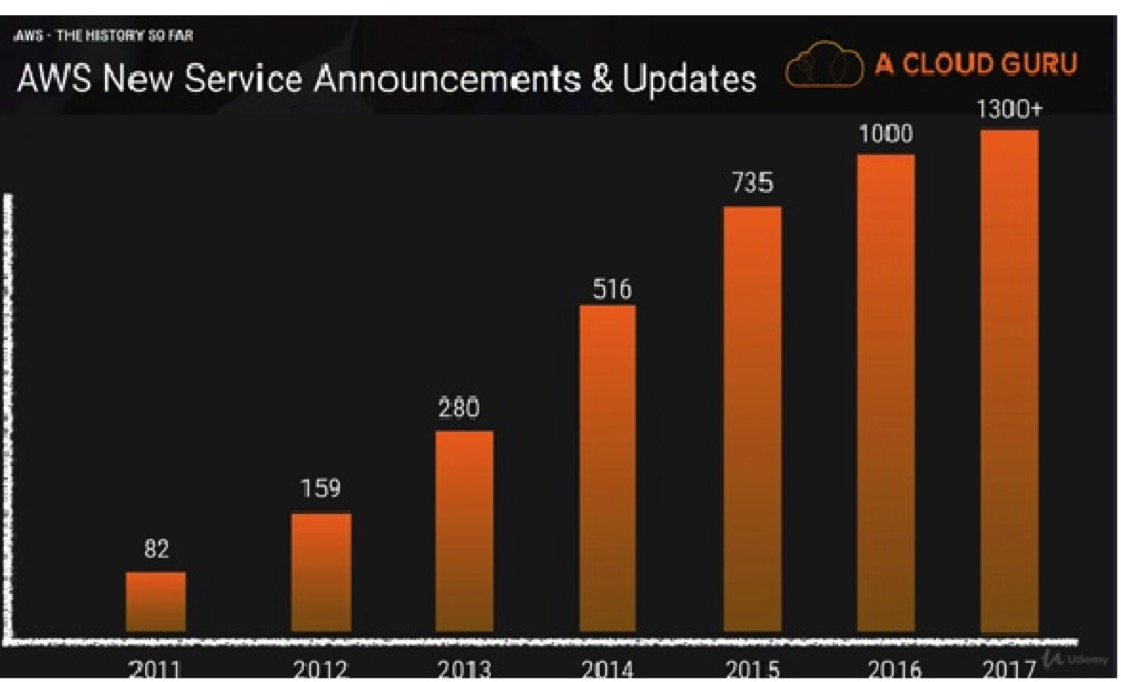Why Enterprises Finally Embracing Public Cloud Computing – DCIG
Two insights By Jerome Wendt
This is a Press Release edited by StorageNewsletter.com on June 12, 2018 at 2:24 pm This article, published on May 31, 2018, was written by Jerome M. Wendt, president and lead analyst of DCIG Inc.
This article, published on May 31, 2018, was written by Jerome M. Wendt, president and lead analyst of DCIG Inc.
Two Insights into
Why Enterprises are Finally Embracing Public Cloud Computing
In between my travels, doing research, and taking some time off in May, I also spent time getting up to speed on Amazon Web Services by studying for the AWS Certified Solutions Architect Associated exam in anticipation of DCIG doing more public cloud-focused competitive research. While I know it is no secret that cloud adoption has taken off in recent years, what has puzzled me during this time is, “Why is it now that have enterprises finally started to embrace public cloud computing?“
From my first days as an IT user I believed that all organizations would eventually embrace cloud computing in some form. That belief was further reinforced as I came to understand virtualization and its various forms (compute, network, and storage.) But what has perplexed me to one degree or another ever since then is why enterprises have not more fully invested in these various types of virtualization and embraced the overall concept of cloud computing sooner.
While there are various reasons for this, I sense the biggest reason is that most organizations view IT as a cost center. Granted, they see the value that IT has brought and continues to bring to their business. However, most organizations do not necessarily want to provide technology services. They would rather look to others to provide the IT technologies that they need and then consume them when they are sufficiently robust and mature for their needs.
Of course, establishing exactly when a technology satisfies these conditions varies for each industry. Some might rightfully argue that cloud computing has been around for a decade or more and that many organizations already use it.
But using public cloud computing for test, development, or even for some limited production deployments within an organization is one thing. Making public cloud computing the preferred or even the only choice for hosting new and existing applications is quite another. When this change in policy occurs within an enterprise, then one can say an enterprise has embraced public cloud computing. To date, only a relatively few enterprises have embraced the cloud computing at scale but I recently ran across two charts that help to explain why this is changing.
The first chart I ran across was in one of the training videos I watched. This video included a graphic that showed the number of new service announcements and updates that AWS made each year from 2011-2017.
It was when I saw the amount of innovation and changes that have occurred in the past three years at AWS that I got a better understanding as to why enterprises have started to embrace cloud computing at scale. Based on these numbers, AWS announced nearly five service announcements and/or updates every business day of 2017.
Many businesses would consider themselves fortunate to do five changes every month much less every day. But this level of innovation and change also explains why public cloud providers are pulling away from traditional data center in terms of the capabilities they can offer. It also explains why enterprises can have more confidence in public cloud providers and move more of their production applications there. This level of innovation also inherently communicates high degrees of stability and maturity which is often what enterprises prioritize.
The other chart brought to my attention is found on Microsoft’s website and provides a side-by-side comparison of Microsoft Azure to AWS. This chart provides a high-level overview of the offerings from both of these providers and how their respective offerings compare and contrast.
Most notable about this chart is that it means organizations have another competitive cloud computing offering that is available from a large, stable provider. In this way, as an enterprise embraces the idea of cloud computing in general and chooses a specific provider of these services, they can do so with the knowledge that they have a viable secondary option should that initial provider become too expensive, change offerings, or withdraw an offering that they currently or plan to use.
Traditional enterprise data centers are not going away. However, as evidenced by the multiple of enhancements that AWS, Microsoft Azure, and others have made in the past few years, their cloud offerings surpass the levels of auditing, flexibility, innovation, maturity, and security found in many corporate data centers. These features coupled with organizations having multiple cloud providers from which to choose provide insight into why enterprises are lowering their resistance to adopting public cloud computing and embracing it more wholeheartedly.















 Subscribe to our free daily newsletter
Subscribe to our free daily newsletter

